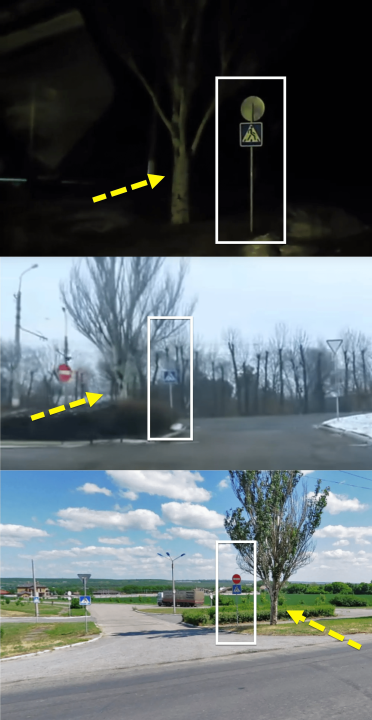#MinskMonitor: Wagner’s Role in Key Ukrainian Battle Revealed
New footage shows the Private Military Company’s involvement in Battle of Debaltseve.
#MinskMonitor: Wagner’s Role in Key Ukrainian Battle Revealed

One of the most decisive battles of the war in eastern Ukraine came in January and February 2015, when Russia sent hundreds — if not thousands — of soldiers and modern tanks to capture the key railway hub of Debaltseve. Ukraine’s defeat in this battle led to the Minsk II agreements, and no battles over the past three years have approached the level of direct Russian involvement seen in Debaltseve.
Recently, a video emerged that was filmed in the winter of 2014 and 2015, which shows soldiers of the infamous Wagner private military company (PMC) riding towards Debaltseve, where they would take part in the battle. The videos were taken from a flash drive that was recovered by Ukrainian forces as a “trophy,” though the original owner of the footage is unknown.
While the role of a number of Russian military units in the Battle of Debaltseve has been extensively documented, less was known about the activities of the Wagner group — until now.
Additional analysis of this footage can be read at Euromaidan Press.
Geolocation of Footage
The newly-posted footage consists of ten short clips from various points in the winter of 2014 and 2015.
The initial night footage showed heavy equipment moving through the streets, with the Wagner mercenaries commenting that they were “ours”. Though the initial night footage seemed nearly impossible to geolocate, it was done by a group of Twitter sleuths, who matched it to western Luhansk. This match was made by comparing a pedestrian crosswalk sign and a tree that is just barely visible to Yandex Streetview and dashcam film footage.
Comparing the sign and tree in the Wagner video with recent dashcam footage and Yandex street-level imagery from the same location showed the similarities.
Later in the night footage, the Wagner mercenaries pass by a modified armored vehicle called a “Vystrel,” used exclusively by the border guards of the Russian security services, and wearing the number 211 on its hull.
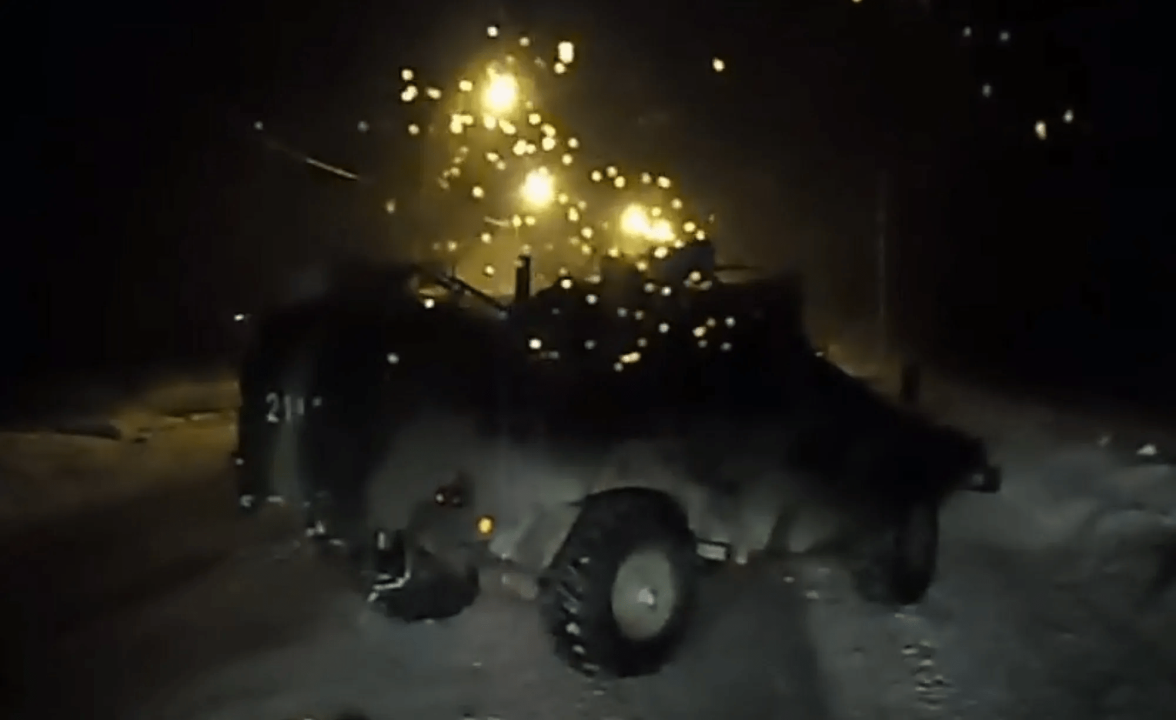
As noted by popular Twitter user Loogunda, this vehicle was photographed in Ukraine multiple times during the Battle of Debaltseve.
The same Vystrel, with the 211 designation, is spotted again in another clip, this time in daylight.
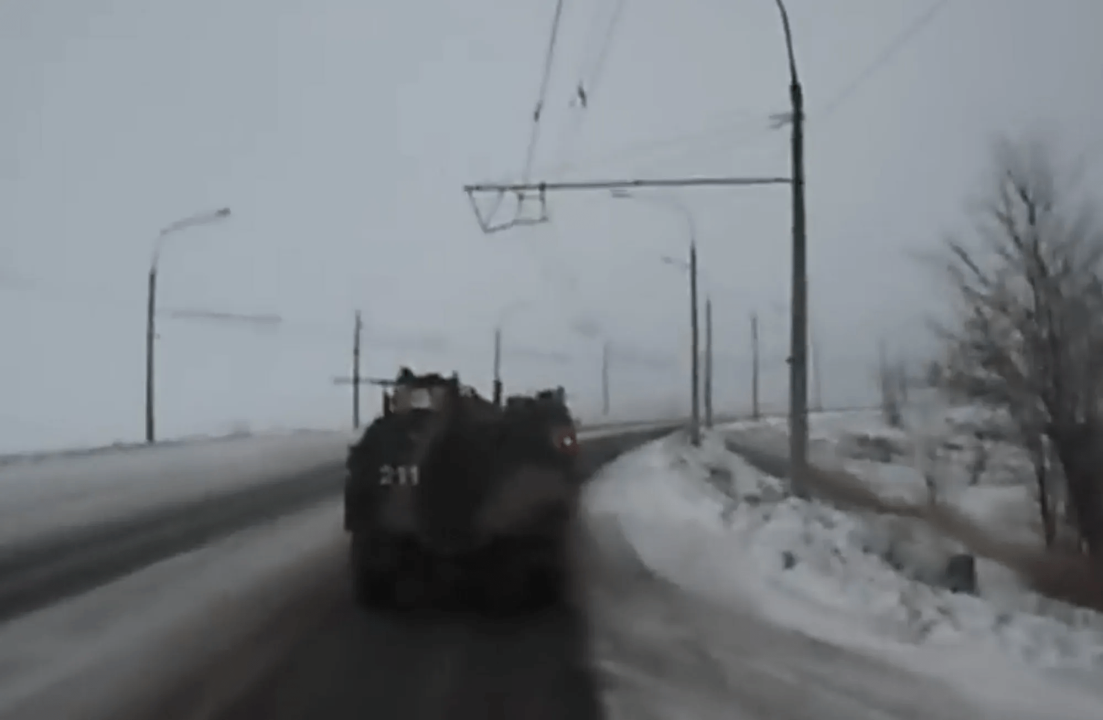
This location was pinpointed by Loogunda to a highway north of Krasnodon and to the west of Sukhodilsk, just west of the Russia-Ukraine border.
Perhaps the easiest geolocation comes from footage passing through Krasnodon, with the town’s name clearly visible.
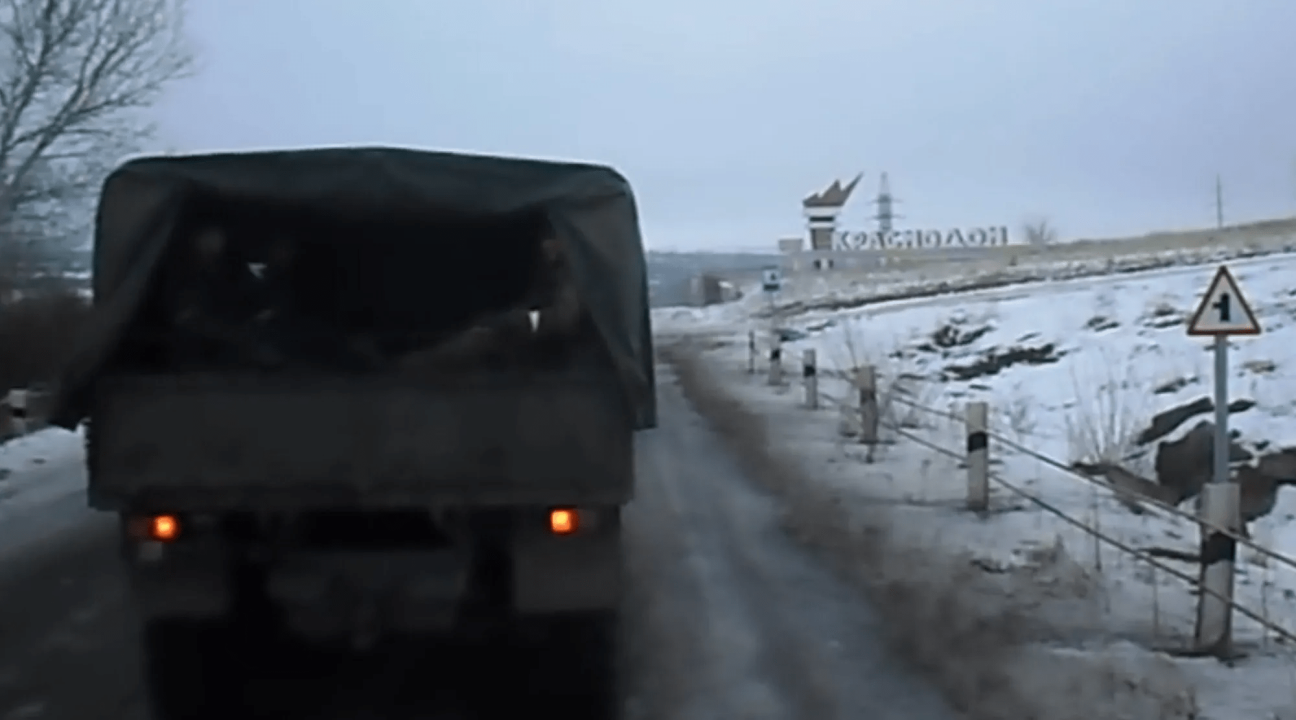
Askai, a well-known open source researcher who @DFRLab has previously profiled, geolocated some of the footage of the convoy en route to battle to south of Krasnodon.
Finally, towards the end of the video, the Wagner mercenaries arrive at their location with a long line of heavy military equipment, including KaMAZ heavy cargo trucks and MT-LB vehicles with anti-aircraft guns mounted.
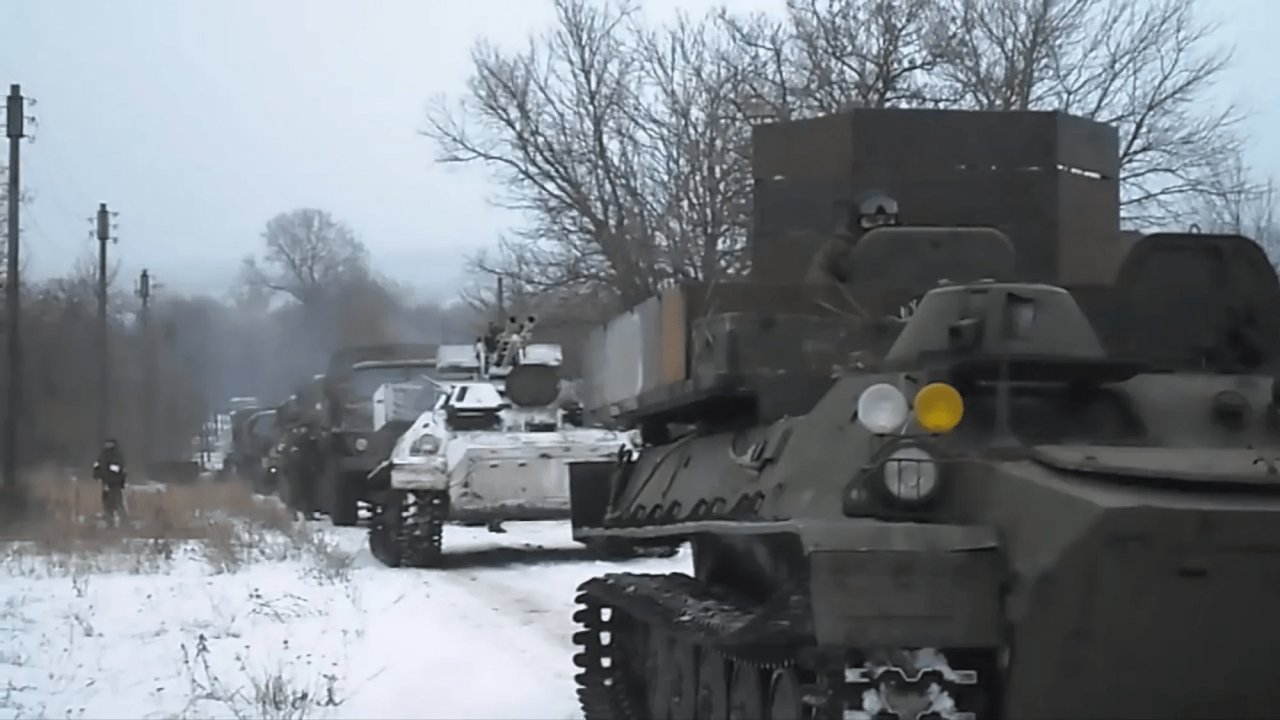
The final moments of the footage showed the Wagner mercenaries in battle, supported by Vystrels from the convoy numbered 221, 223, and 232, the latter number being obscured.
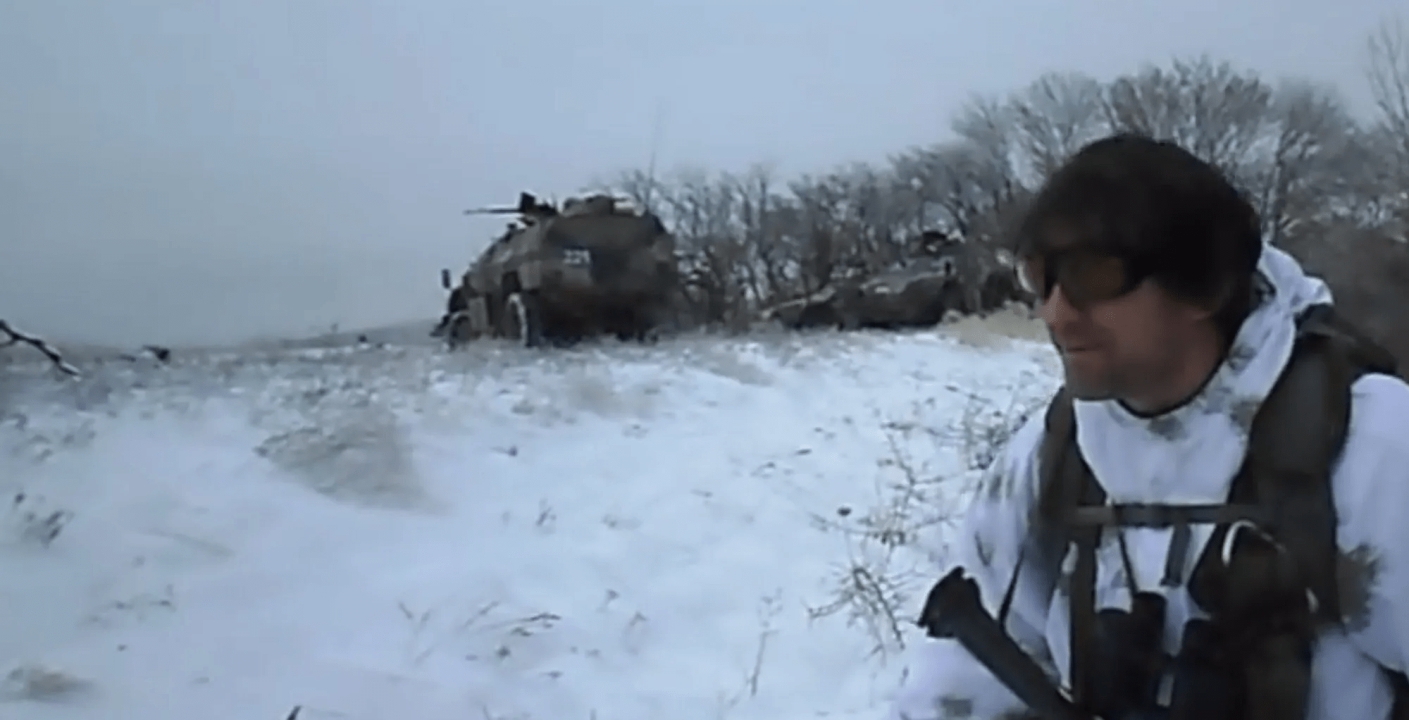
This battle scene was, per Twitter user @nvr_cry_wolf, in a field north of Debaltseve. Euromaidan Press has confirmed the geolocation by matching power lines and the shape of the forested area.
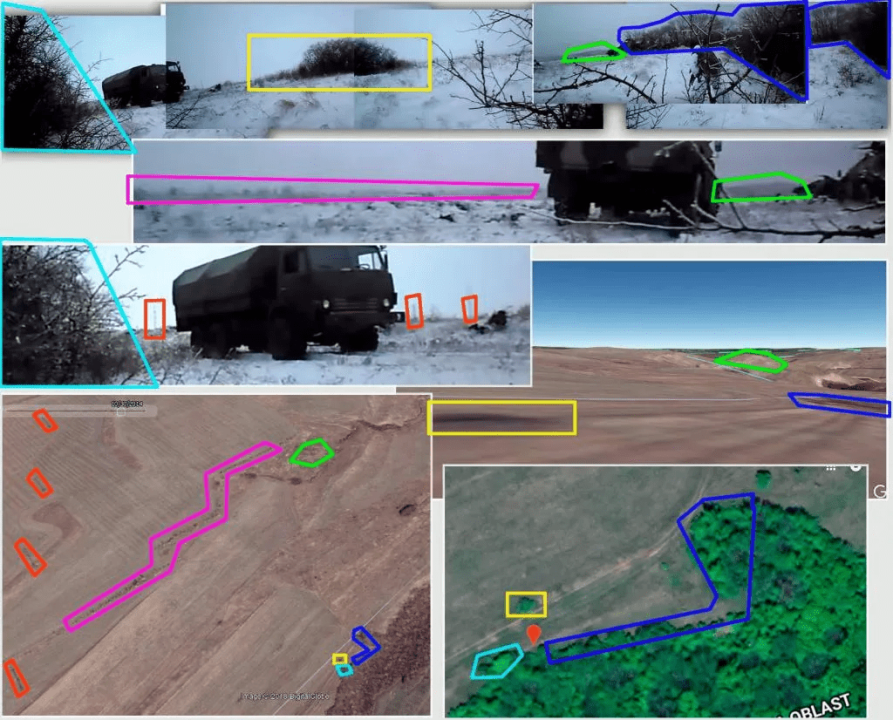
Taken together, we can see the locations filmed in the footage to the areas near Luhansk, Krasnodon, and north of Debaltseve.

Wagner’s Role in Ukraine
The Wagner PMC was heavily involved in the war in eastern Ukraine before its activities in Syria, which have received significant international attention. A recent interview published on Ridus.ru with a former Russian/separatist battalion commander, Evstafiy Botvinyev, sheds more light on how Wagner operated in Ukraine. Per Botvinyev, the Wagner mercenaries in the Luhansk Oblast were supervised by “Andrey Ivanovich,” the pseudonym of Russian GRU officer Oleg Ivannikov, who previously served as the Minister of Defense of the self-declared Republic of South Ossetia from 2006–8. Ivannikov gave orders to both the Wagner mercenaries operating in the area and Igor Plotnitsky, who was Minister of Defense of the self-declared Luhansk People’s Republic (LNR) in 2014.
In June, the Ukrainian Security Services (SBU) published telephone conversations from the founder of Wagner, Dmitry Utkin, and Oleg Ivannikov (using the pseudonym Andrei Ivanovich), the Russian GRU officer commanding forces in the Luhansk Oblast. In the calls, Ivannikov and Utkin coordinate actions in February 2015, during the heights of the Battle of Debaltseve. The SBU also published a call between Wagner founder Utkin and Igor Plotnitsky, former Defense Minister and the Head of LNR at the time, conducted in January 2015.
Clearly, Wagner was used in lockstep with the wishes of both the security services of the Russian Federation, seen in the call with Ivannikov, and the LNR, though the latter is subordinate to their Russian superiors. While the mercenaries of Wagner are often presented as independent actors, they are anything but. Blackwater (now Academi) shares similarities with Wagner, although not identical, in that both share the business model of carrying out risky tasks in dangerous areas on behalf of mainly government clients. Wagner — though with much more secrecy than Blackwater/Academi — carries out politically sensitive and dangerous tasks for the benefit of the Russian state and its interests, for a high price.
With the recently-published video, we have more clues to piece together just what Wagner did while in Ukraine. While the West is often trying to catch up to the semi-covert actions of Russia from 2015, the role of Wagner in Luhansk has long been acknowledged — look no further than the statue built to Wagner mercenaries in central Luhansk, identical to other Wagner statues built in Syria, as detailed by @DFRLab in March:
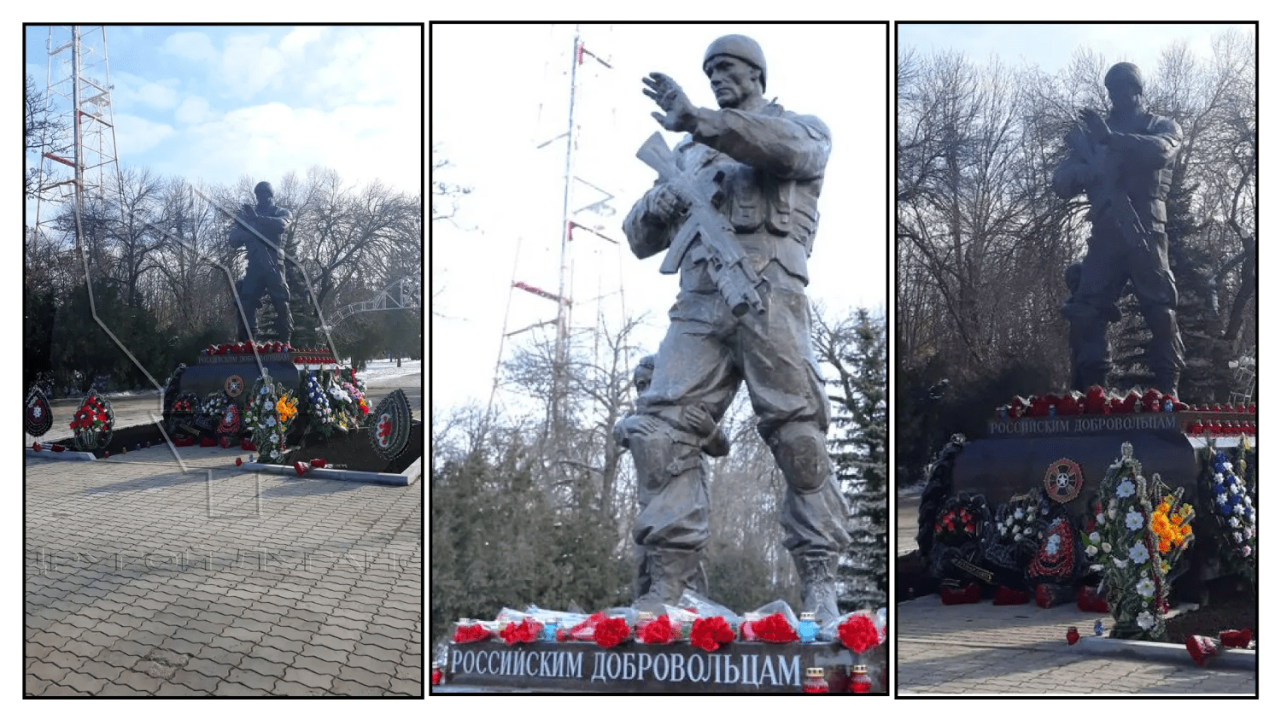
Follow the latest Minsk II Violations via the @DFRLab’s #MinskMonitor.
For more in-depth analysis from our regional experts follow the Atlantic Council’s Dinu Patriciu Eurasia Center. Or subscribe to UkraineAlert.

